Automatic Modeller of Textile Yarns at Fibre Level
Abstract
1. Introduction
2. State of the Art
3. Materials and Methods
3.1. Assumptions and Equations for Yarn Modelling
- –
- The yarn consists of a large number of fibres of limited length.
- –
- The yarn is circular in cross section and regular principally.
- –
- The spatial fibre distribution and packing of fibres in the yarn cross section is uniform.
- –
- Fibres are assumed to lie on perfect helixes of a constant radius and angle. All those helixes throughout the cross -section have the same number of turns per unit length parallel to the axis of the helix.
- –
- The radial location of a given fibre is fixed so that the individual fibres are not migrating between the periphery and interior of the yarn, but stay at a given radial location.
- –
- The fibres are assumed to have identical circular dimensions and properties.
3.1.1. Helical Yarn Model
3.1.2. Geometrical Model for Ply Yarn Axis
3.1.3. Geometrical Model for Ply Yarn of Continuous Filaments
3.1.4. Geometrical Model for Yarns of Short Staple Fibres
3.2. Modelling of Single Yarn Geometry
4. Result and Discussions
4.1. Visualization of the Geometrical Models
4.2. Application of the Models
- The visualization of the structure and arrangement of fibres in the yarn. The visualization of the arrangement of filament fibres in filament yarns, single yarns and fibres in ply yarns and the random distribution of short fibres is possible.
- The simulation of physical properties of the yarn such as tensile, compression and bending properties. Generally, the models can be used for mechanical, thermal, fluid flow and other simulations of the textile structures using FEM, CFD and other numerical tools.
- The analysis of the contact detection of the fibres in the yarn.
- Other applications.
5. Conclusions
Author Contributions
Funding
Institutional Review Board Statement
Informed Consent Statement
Data Availability Statement
Acknowledgments
Conflicts of Interest
References
- Kyosev, Y. Topology-Based Modeling of Textile Structures and Their Joint Assemblies; Springer: New York, NY, USA, 2019. [Google Scholar]
- Gegauff, C. Strength and elasticity of cotton threads. Bull. Soc. Ind. Mulhouse 1907, 77, 153–176. [Google Scholar]
- McKenna, H.A.; Hearle, J.W.; O’Hear, N. Handbook of Fibre Rope Technology; Woodhead publishing: Sawston, UK, 2004; Volume 34. [Google Scholar]
- Platt, M.M. Mechanics of Elastic Performance of Textile Materials: Part IV: Some Aspects of Stress Analysis of Textile Structures—Staple—Fiber Yarns. Text. Res. J. 1950, 20, 519–538. [Google Scholar] [CrossRef]
- Hearle, J.; El-Behery, H.; Thakur, V. 6—the mechanics of twisted yarns: Tensile properties of continuous-filament yarns. J. Text. Inst. Trans. 1959, 50, T83–T111. [Google Scholar] [CrossRef]
- Lomov, S.V.; Ivanov, D.S.; Verpoest, I.; Zako, M.; Kurashiki, T.; Nakai, H.; Hirosawa, S. Meso-FE modelling of textile composites: Road map, data flow and algorithms. Compos. Sci. Technol. 2007, 67, 1870–1891. [Google Scholar] [CrossRef]
- Adanur, S.; Liao, T. 3D modeling of textile composite preforms. Compos. Part B Eng. 1998, 29, 787–793. [Google Scholar] [CrossRef]
- Mishra, R.; Militky, J.; Behera, B.; Banthia, V. Modelling and simulation of 3D orthogonal fabrics for composite applications. J. Text. Inst. 2012, 103, 1255–1261. [Google Scholar] [CrossRef]
- Kyosev, Y. Geometrical modeling and computational mechanics tools for braided structures. In Advances in Braiding Technology; Elsevier: Amsterdam, The Netherlands, 2016; pp. 501–519. [Google Scholar]
- Kyosev, Y. Generalized geometric modeling of tubular and flat braided structures with arbitrary floating length and multiple filaments. Text. Res. J. 2016, 86, 1270–1279. [Google Scholar] [CrossRef]
- Renkens, W.; Kyosev, Y. Geometry modelling of warp knitted fabrics with 3D form. Text. Res. J. 2011, 81, 437–443. [Google Scholar] [CrossRef]
- Kyosev, Y.; Angelova, Y.; Kovar, R. 3D modeling of plain weft knitted structures of compressible yarn. Res. J. Text. Appar. 2005, 9, 88–97. [Google Scholar] [CrossRef]
- Wadekar, P.; Perumal, V.; Dion, G.; Kontsos, A.; Breen, D. An optimized yarn-level geometric model for Finite Element Analysis of weft-knitted fabrics. Comput. Aided Geom. Des. 2020, 80, 101883. [Google Scholar] [CrossRef]
- Dash, B.; Behera, B.; Mishra, R.; Militky, J. Modeling of internal geometry of 3D woven fabrics by computation method. J. Text. Inst. 2013, 104, 312–321. [Google Scholar] [CrossRef]
- Stig, F.; Hallström, S. Spatial modelling of 3D-woven textiles. Compos. Struct. 2012, 94, 1495–1502. [Google Scholar] [CrossRef]
- Nasser, S.; Hallal, A.; Hammoud, M.; Hallal, J.; Karaki, M. Geometrical modeling of yarn’s cross-section towards a realistic unit cell of 2D and 3D woven composites. J. Text. Inst. 2020, 112, 1–16. [Google Scholar] [CrossRef]
- Seyam, A.F.M.; Ince, M.E. Generalized geometric modeling of three-dimensional orthogonal woven preforms from spun yarns. J. Text. Inst. 2013, 104, 914–928. [Google Scholar] [CrossRef]
- Jiang, Y.; Chen, X. Geometric and algebraic algorithms for modelling yarn in woven fabrics. J. Text. Inst. 2005, 96, 237–245. [Google Scholar] [CrossRef]
- Zheng, T. Study on general geometrical modeling of single yarn with 3D twist effect. Text. Res. J. 2010, 80, 867–879. [Google Scholar] [CrossRef]
- Rawal, A.; Potluri, P.; Steele, C. Geometrical modeling of the yarn paths in three-dimensional braided structures. J. Ind. Text. 2005, 35, 115–135. [Google Scholar] [CrossRef]
- Zheng, T.; Wei, J.; Shi, Z.; Li, T.; Wu, Z. An Overview of modeling yarn’s 3D geometric configuration. J. Text. Sci. Technol. 2015, 1, 12. [Google Scholar] [CrossRef]
- Hearn, D.; Baker, M.P. Computer Graphics C Version; Pearson Education: Upper Saddle River, NJ, USA, 1997. [Google Scholar]
- Liao, T.; Adanur, S. A novel approach to three-dimensional modeling of interlaced fabric structures. Text. Res. J. 1998, 68, 841–847. [Google Scholar] [CrossRef]
- Lin, H.; Brown, L.P.; Long, A.C. Modelling and simulating textile structures using TexGen. In Advanced Materials Research; Trans Tech, University of Nottingham: Nottingham, UK, 2011; Volume 331, pp. 44–47. [Google Scholar]
- Jiang, Y.; Chen, X. The Structural Design of Software for Simulation and Analysis of Woven Fabrics by Geometric Modeling. In Proceedings of the Textile Institute 83rd World Conference, Shanghai, China, 23–27 May 2004; pp. 1298–1301. [Google Scholar]
- Lin, H.Y.; Newton, A. Computer representation of woven fabric by using B-splines. J. Text. Inst. 1999, 90, 59–72. [Google Scholar] [CrossRef]
- Sherburn, M. Geometric and Mechanical Modelling of Textiles. Ph.D. Thesis, University of Nottingham, Nottingham, UK, 2007. [Google Scholar]
- Zheng, T.; Cui, S. Improvement on modeling a 3-D yarn with B-spline surface. J. Text. Res. 2007, 28, 35. [Google Scholar]
- Zhixiang, Z. Study on ply yarn model construction by cubic C-Cardinal spline curve. J. Text. Re. 2014, 35, 148–152. [Google Scholar]
- Zhong, H.; Xu, Y.Q.; Guo, B.; Shum, H.Y. Realistic and efficient rendering of free-form knitwear. J. Vis. Comput. Animat. 2001, 12, 13–22. [Google Scholar] [CrossRef]
- Zhao, S.; Luan, F.; Bala, K. Fitting procedural yarn models for realistic cloth rendering. Acm Trans. Graph. (TOG) 2016, 35, 1–11. [Google Scholar] [CrossRef]
- Wu, K.; Yuksel, C. Real-time cloth rendering with fiber-level detail. IEEE Trans. Vis. Comput. Graph. 2017, 25, 1297–1308. [Google Scholar] [CrossRef]
- Lord, P.R. Handbook of Yarn Production: Technology, Science and Economics; Elsevier: Amsterdam, The Netherlands, 2003. [Google Scholar]
- Lawrence, C.A. Fundamentals of Spun Yarn Technology; Crc Press: Boca Raton, FL, USA, 2003. [Google Scholar]
- Hearle, J.W.; Grosberg, P.; Backer, S. Structural Mechanics of Fibers, Yarns, and Fabrics; Wiley-Interscience: New York, NY, USA, 1969. [Google Scholar]
- Pardalos, P.M.; Du, D.Z.; Graham, R.L. Handbook of Combinatorial Optimization; Springer: New York, NY, USA, 2013. [Google Scholar]
- Zhang, Z.; Wu, W.; Ding, L.; Liu, Q.; Wu, L. Packing circles in circles and applications. In Handbook of Combinatorial Optimization; Springer Science & Business Media: New York, NY, USA, 2013; pp. 2549–2584. [Google Scholar]
- Weisstein, E.W. Helix. Available online: https://mathworld.wolfram.com/ (accessed on 10 May 2022).
- Seaman, W. Modern Differential Geometry of Curves and Surfaces with Mathematica; Chapman and Hall/CRC: London, UK, 1999. [Google Scholar]
- Kyosev, Y. Available online: Texmind.com (accessed on 11 May 2022).
- Treloar, L. 25—The Geometry of Multi-Ply Yarns. J. Text. Inst. Trans. 1956, 47, T348–T368. [Google Scholar] [CrossRef]
- Krishnamoorthy, K. Handbook of Statistical Distributions with Applications; Chapman and Hall/CRC: London, UK, 2006. [Google Scholar]
- Brown, L.P.; Zeng, X.; Long, A.; Jones, I.A. Recent developments in the realistic geometric modelling of textile structures using TexGen. In Proceedings of the 1st International Conference on Digital Technologies for the Textile Industries, Manchester, UK, 5–6 September 2013; Volume 5, p. 6. [Google Scholar]
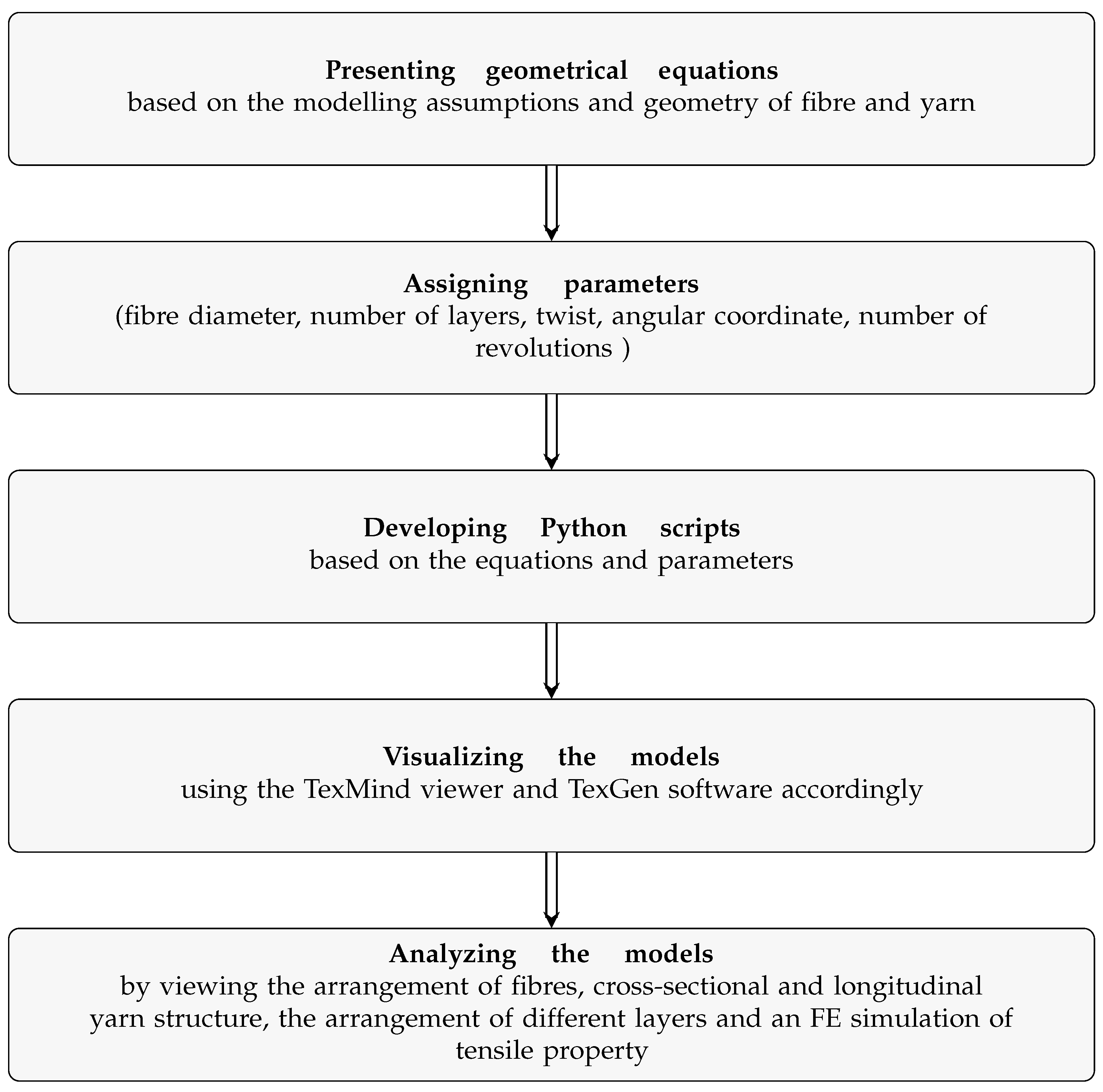
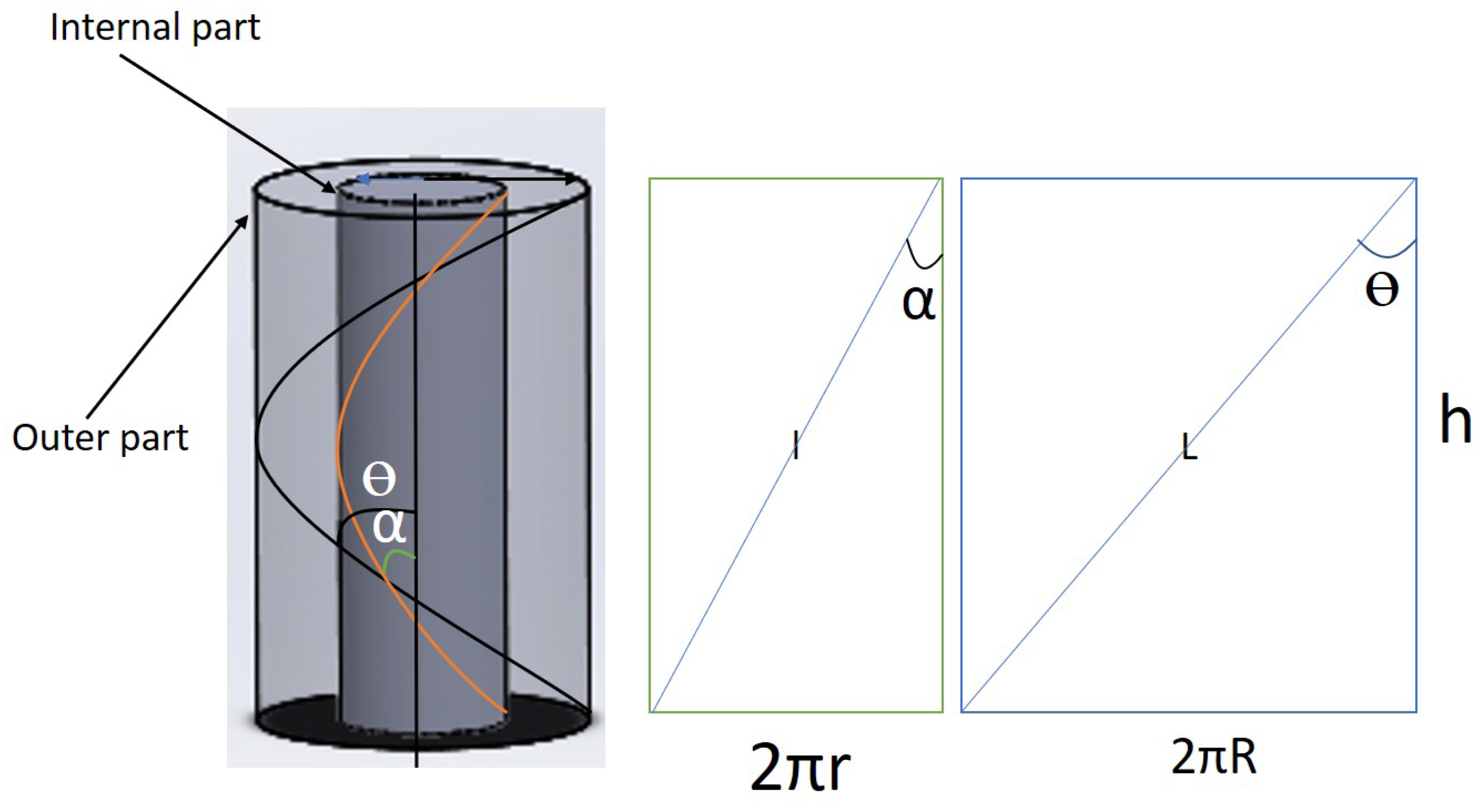
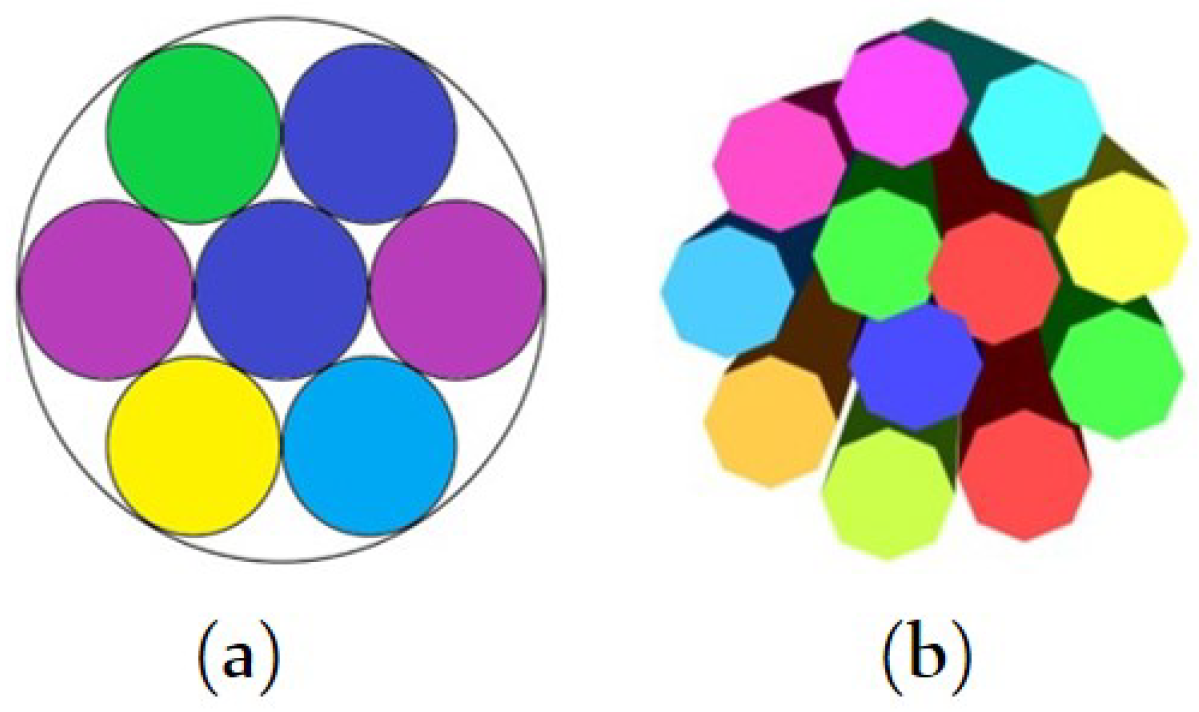


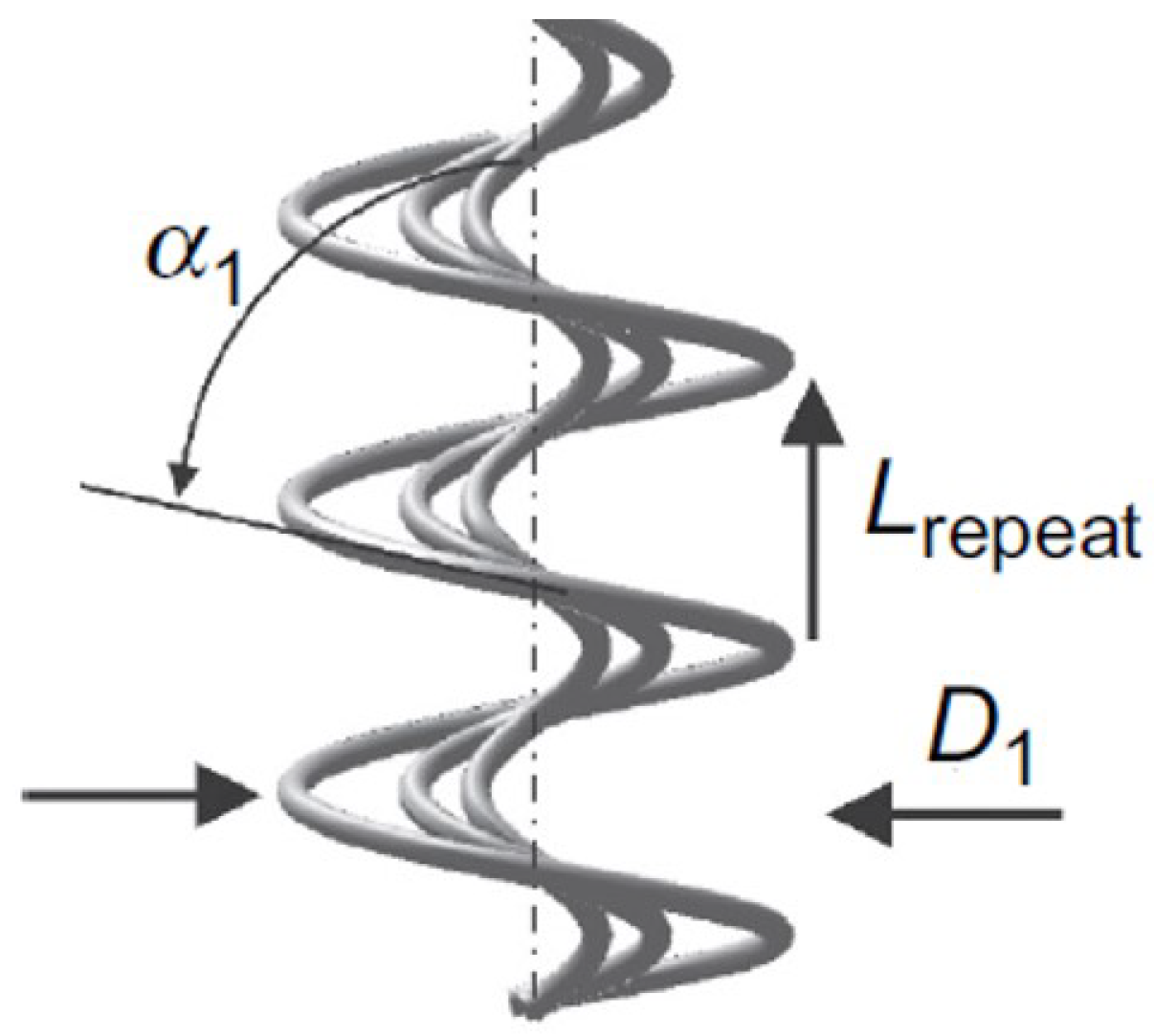







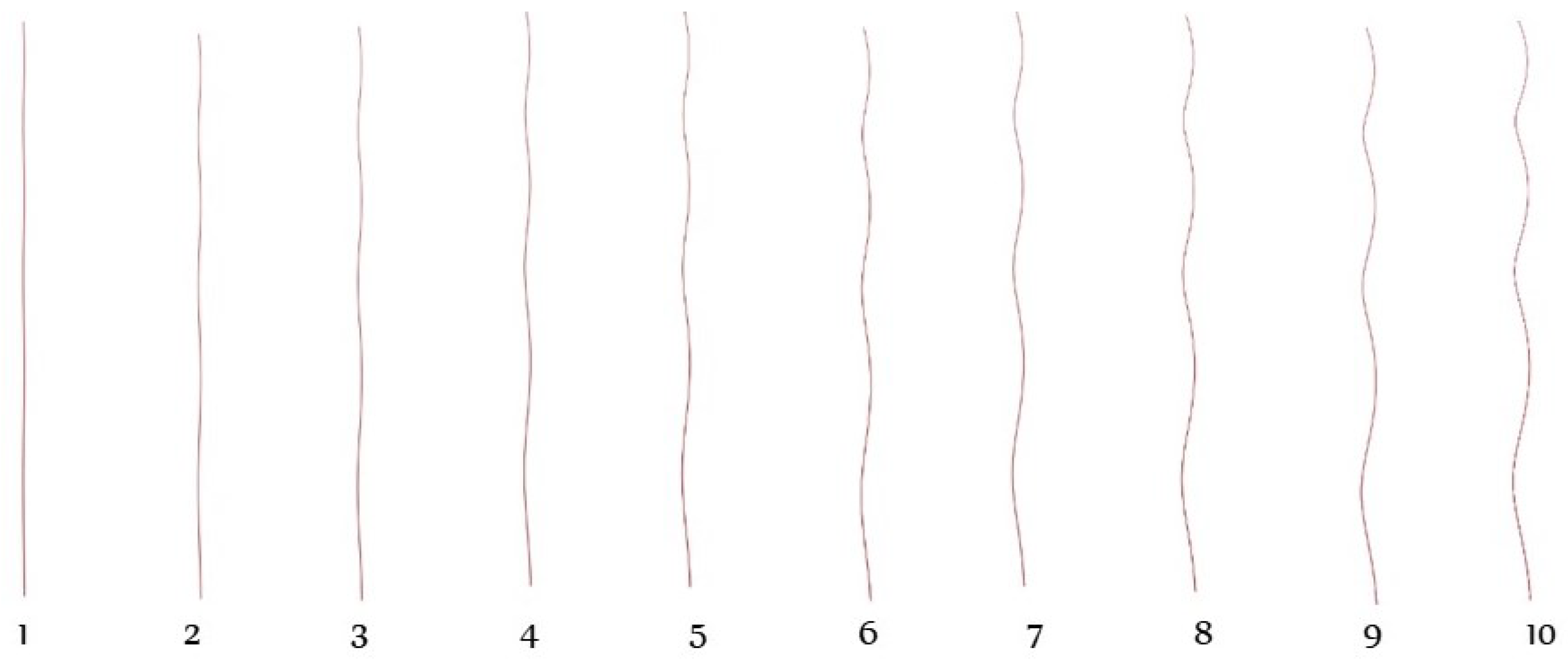


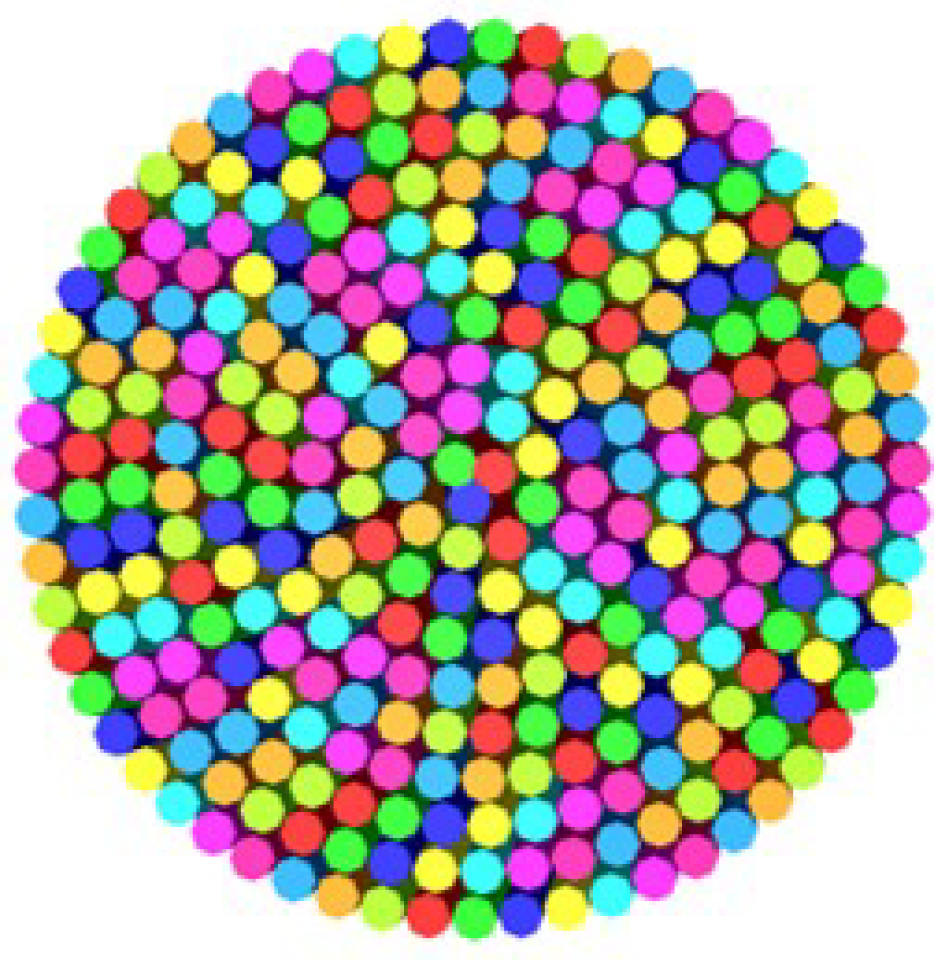



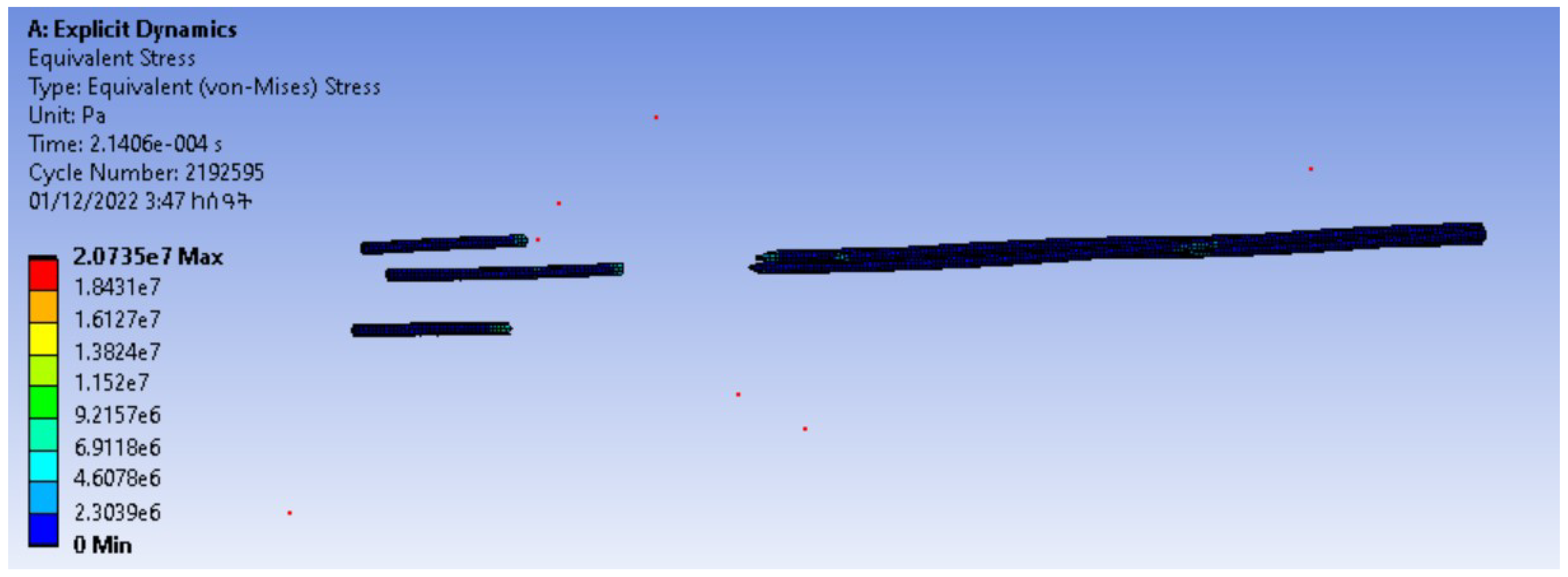
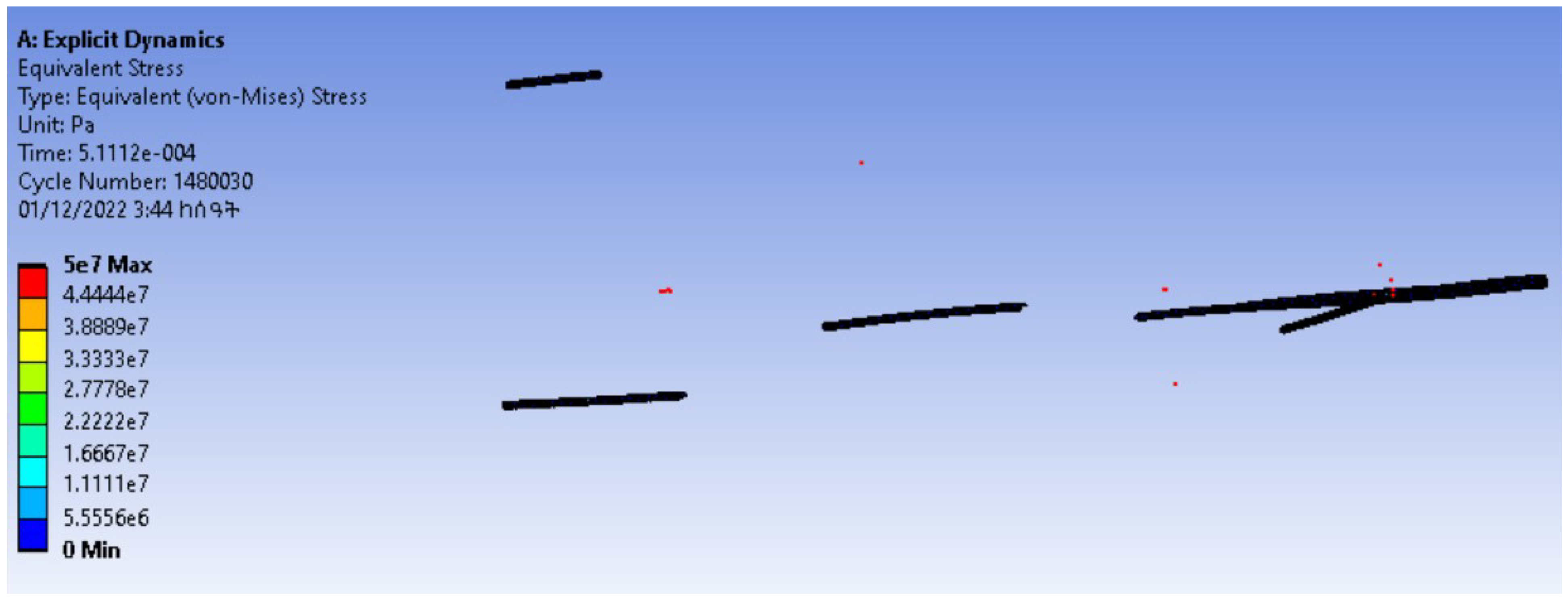
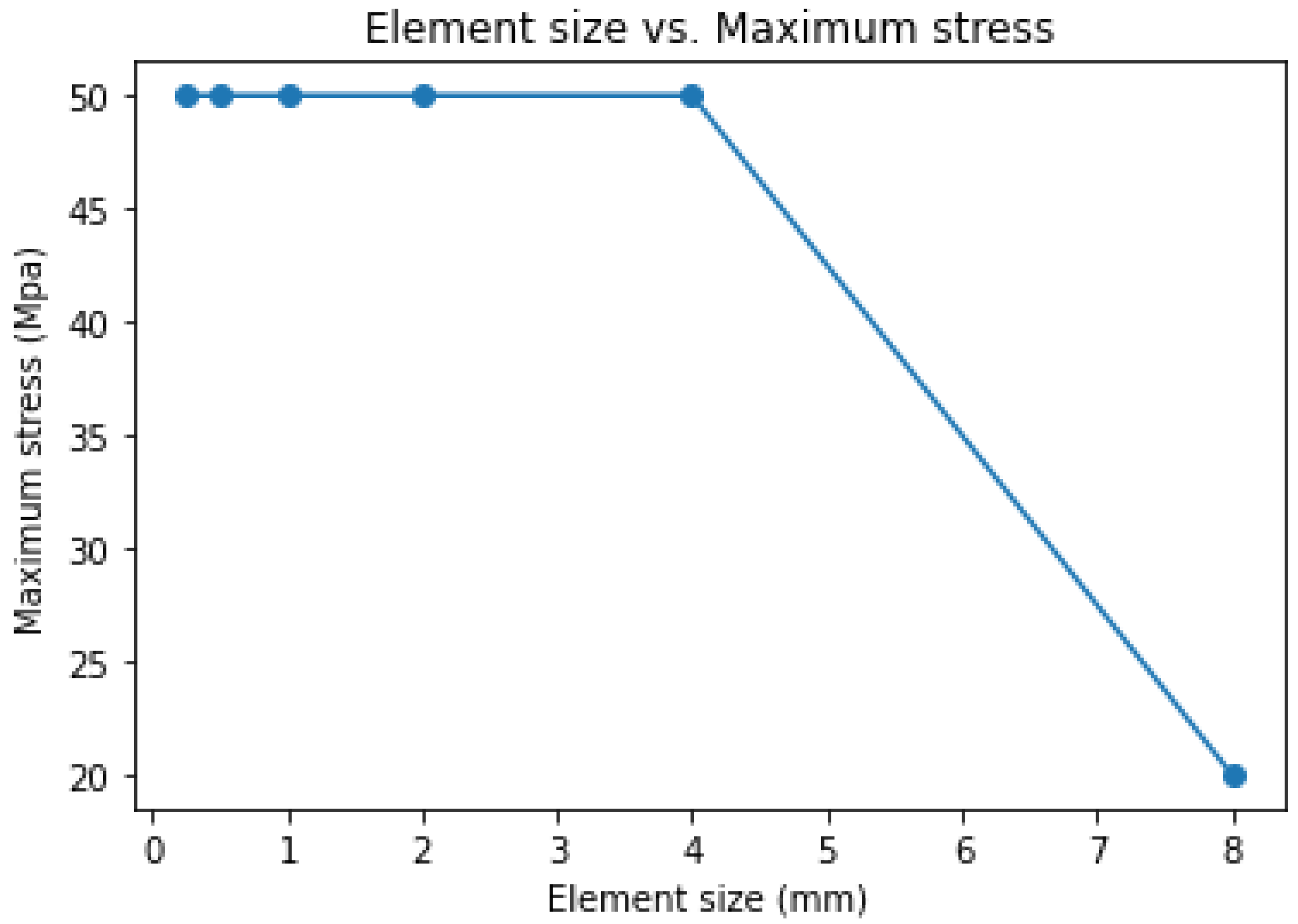
Publisher’s Note: MDPI stays neutral with regard to jurisdictional claims in published maps and institutional affiliations. |
© 2022 by the authors. Licensee MDPI, Basel, Switzerland. This article is an open access article distributed under the terms and conditions of the Creative Commons Attribution (CC BY) license (https://creativecommons.org/licenses/by/4.0/).
Share and Cite
Aychilie, D.B.; Kyosev, Y.; Abtew, M.A. Automatic Modeller of Textile Yarns at Fibre Level. Materials 2022, 15, 8887. https://doi.org/10.3390/ma15248887
Aychilie DB, Kyosev Y, Abtew MA. Automatic Modeller of Textile Yarns at Fibre Level. Materials. 2022; 15(24):8887. https://doi.org/10.3390/ma15248887
Chicago/Turabian StyleAychilie, Desalegn Beshaw, Yordan Kyosev, and Mulat Alubel Abtew. 2022. "Automatic Modeller of Textile Yarns at Fibre Level" Materials 15, no. 24: 8887. https://doi.org/10.3390/ma15248887
APA StyleAychilie, D. B., Kyosev, Y., & Abtew, M. A. (2022). Automatic Modeller of Textile Yarns at Fibre Level. Materials, 15(24), 8887. https://doi.org/10.3390/ma15248887





